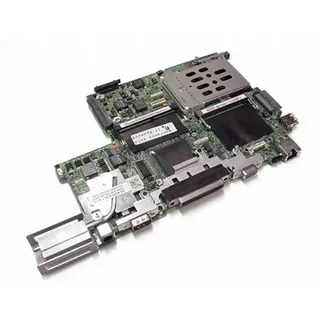When you’re dealing with hardware upgrades or repairs, affordable laptop motherboards can be a game-changer. Whether you’re fixing a damaged device, building laptops for resale, or simply want to extend your current system’s life, selecting the right motherboard at a reasonable cost requires careful consideration of compatibility, performance, and reliability.
Understanding Laptop Motherboards
Laptop motherboards are the primary circuit boards in a system, connecting all internal components—CPU, RAM, storage, GPU, ports, and more. They differ from desktop motherboards in size, layout, and upgradability.
What Makes Them Unique?
Unlike desktops, laptop motherboards are typically custom-built to fit specific models. This means you can’t just swap one out for another unless it’s made for the same make and model. Additionally, many components like the CPU and GPU are soldered directly onto the board, limiting flexibility.
Why Replacing the Motherboard Matters
Motherboard replacements are essential in cases of severe hardware failure, power issues, or when upgrading a laptop’s internal specs. A quality replacement can save money compared to purchasing a new laptop.
Key Features to Look For
When searching for a replacement motherboard, consider the following:
Compatibility
Ensure the board is designed for your exact laptop model. Even minor variations in model numbers can mean differences in layout or component slots.
Processor Support
Some boards come with a CPU soldered on; others have a socket. Verify which type yours uses and whether it supports your desired processor model.
RAM and Storage Interfaces
Check the maximum RAM capacity, the number of memory slots, and the type of supported storage (e.g., SATA, NVMe).
Integrated Graphics and Ports
If your laptop requires onboard graphics or specific port layouts (HDMI, USB-C, etc.), make sure the motherboard supports those features.
Where to Buy Laptop Motherboards on a Budget
Certified Refurbishers
These suppliers test, clean, and repackage motherboards, often offering warranties at lower prices than brand-new components.
Online Marketplaces
Websites like eBay or Amazon offer used, refurbished, and new boards. Always check seller ratings and reviews before buying.
Electronic Part Distributors
Suppliers that specialize in replacement parts for laptops often provide better compatibility search tools and model filters.
Local Repair Shops
Sometimes local shops have pulled parts from damaged laptops at affordable rates. Be sure to ask if they offer a return policy or limited warranty.
Tips for a Successful Purchase
Verify the Board’s Condition
Look for signs of damage, missing components, or corrosion, especially if buying used. A clear photo of the actual product helps.
Ask About Return Policies
If the board turns out incompatible or faulty, a return policy could save you unnecessary expense and hassle.
Cross-Check Part Numbers
Motherboard part numbers (often found near the RAM or under the battery) should exactly match your original component for the best compatibility.
How to Replace a Laptop Motherboard
Tools You’ll Need
-
Precision screwdrivers
-
Anti-static wrist strap
-
Thermal paste (if CPU is separate)
-
Clean surface and good lighting
Step-by-Step Overview
-
Power down the laptop and remove the battery.
-
Unscrew and open the back panel carefully.
-
Disconnect all cables, fans, and internal components.
-
Remove the damaged motherboard.
-
Install the new motherboard and reconnect components.
-
Reassemble the case and test the device before full closure.
When to Seek Help
If you’re not confident in your ability to disassemble the laptop or deal with fragile ribbon cables, a technician can ensure the installation goes smoothly.
Common Mistakes to Avoid
Buying the Wrong Model
Always double-check your laptop’s full model number and compare it against the motherboard listing. Look for exact matches, not just similar names.
Ignoring Power Specs
Different motherboards may require different power delivery specifications. Using the wrong adapter or internal connections could cause further damage.
Skipping BIOS Updates
Sometimes a new board requires a BIOS update or reconfiguration. Refer to the laptop manufacturer’s instructions if you face boot issues.
How to Extend the Life of Your New Motherboard
Regular Cleaning
Dust buildup can trap heat and shorten component lifespan. Use compressed air to clean vents and internal parts every few months.
Use a Quality Charger
Cheap or incompatible chargers can damage internal components. Always use OEM or certified alternatives.
Monitor Temperatures
Install software to monitor CPU and GPU temperatures. If things get too hot, it may indicate fan issues or bad thermal paste.
Final Thoughts
Choosing affordable laptop motherboards doesn’t mean compromising on quality or performance. With a little research and caution, you can find a reliable replacement that brings your laptop back to life—without draining your wallet.









